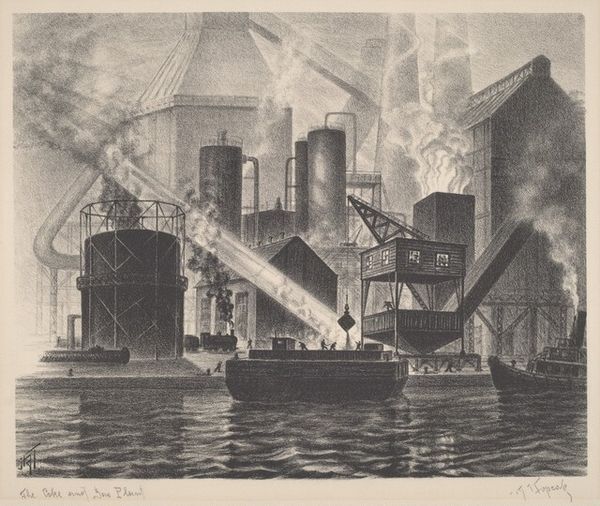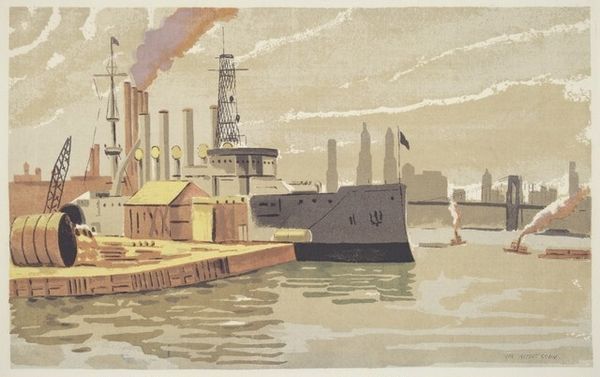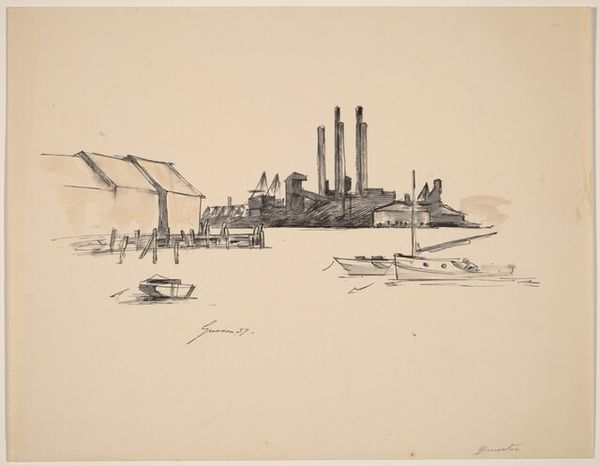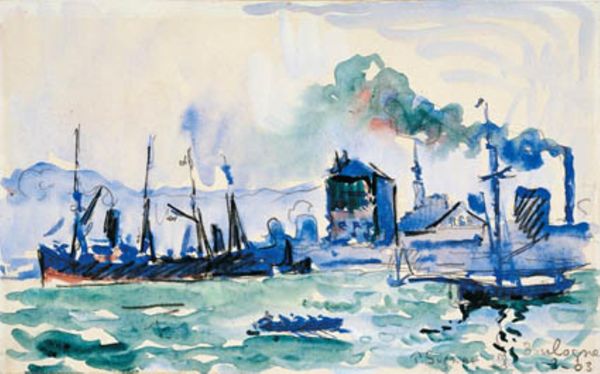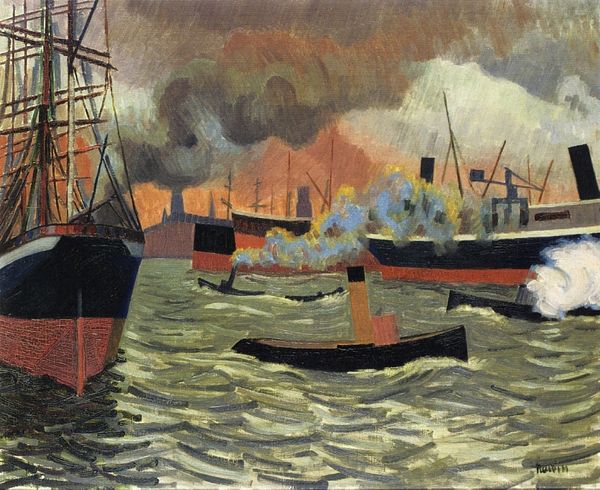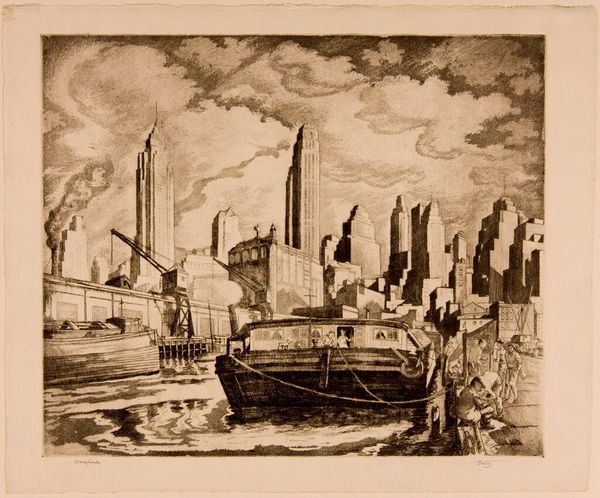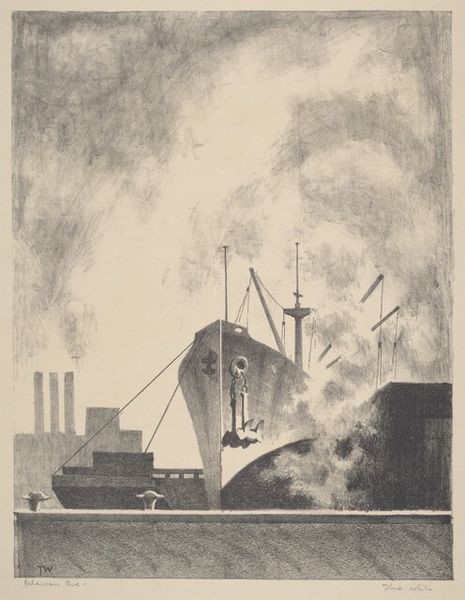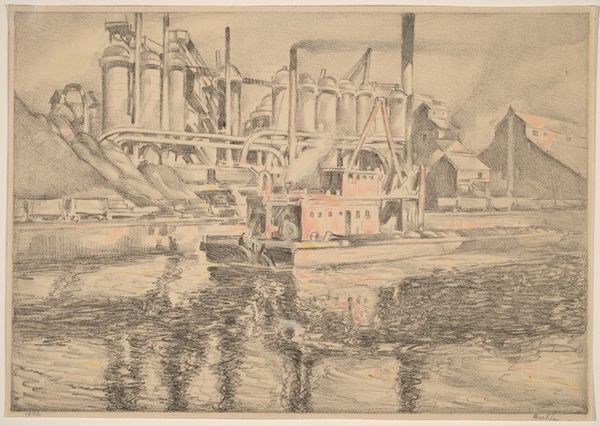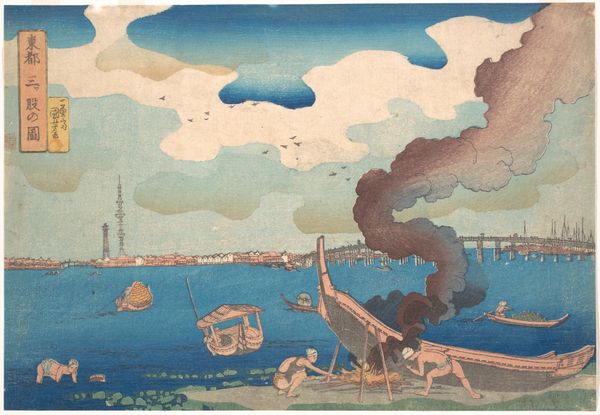
print, watercolor
# print
#
watercolor
#
cityscape
#
watercolor
#
realism
Dimensions: image: 37.5 × 50.8 cm (14 3/4 × 20 in.) sheet: 40.5 × 51 cm (15 15/16 × 20 1/16 in.)
Copyright: National Gallery of Art: CC0 1.0
Curator: Reginald Marsh's "Tug Boat in New York Harbor," circa 1942. A watercolor and print piece, quite evocative. Editor: There's a melancholy feel, wouldn't you say? The muted colors and that plume of smoke—it feels almost industrial, even with the watercolor medium. The way the artist balances these gray tones makes the water, boats, and skyline seem as one mass of form, all while contrasting it with that central plume of dark smoke. Curator: Interesting observation. For me, it screams of a bustling, wartime New York. You see the labor, the industry, and that plume is very symbolic. These were necessary and vital processes to support the ongoing conflict efforts. Notice how he layers print with watercolor—mass production meeting the unique artist's touch. The materials themselves become part of the narrative of American production at the time. Editor: The layering is quite evident. How the watercolor almost dissolves the underlying forms, creating that hazy distance, specifically with the vague building details. Do you think this reflects wartime anxieties or uncertainties that add to this hazy, blurred composition? Curator: Potentially. There’s an honesty about it, revealing a world that wasn't always clean and precise, acknowledging the real world was sometimes obscured and that everything came with consequences—including visual byproducts like dark smoke. Think of the working class—the sailors and factory workers of New York—essential to wartime and post-war production. Editor: It’s clever how Marsh frames the subject without any vibrant colours. Instead he focuses on grays, browns, and blues—it creates a somber mood. But you can't escape his attention to form and the way the tugboat intersects with the implied lines of those other boats. Even its structural silhouette and how it all relates geometrically. Curator: And we can see that silhouette working within its intended context; not a heroic symbol of military might but just a mundane working element, set against this very distinctive watercolor skyline of the harbor. Editor: Agreed. And, for a fleeting moment, these aesthetic details are juxtaposed within a much grander scheme, thus prompting new ways of perceiving form, art, life. Curator: Precisely. This piece opens a space for multiple readings, simultaneously showcasing labor and the material conditions that birthed it. Editor: It's an understated reminder that beauty can be found even in the most functional of forms and ordinary things.
Comments
No comments
Be the first to comment and join the conversation on the ultimate creative platform.
